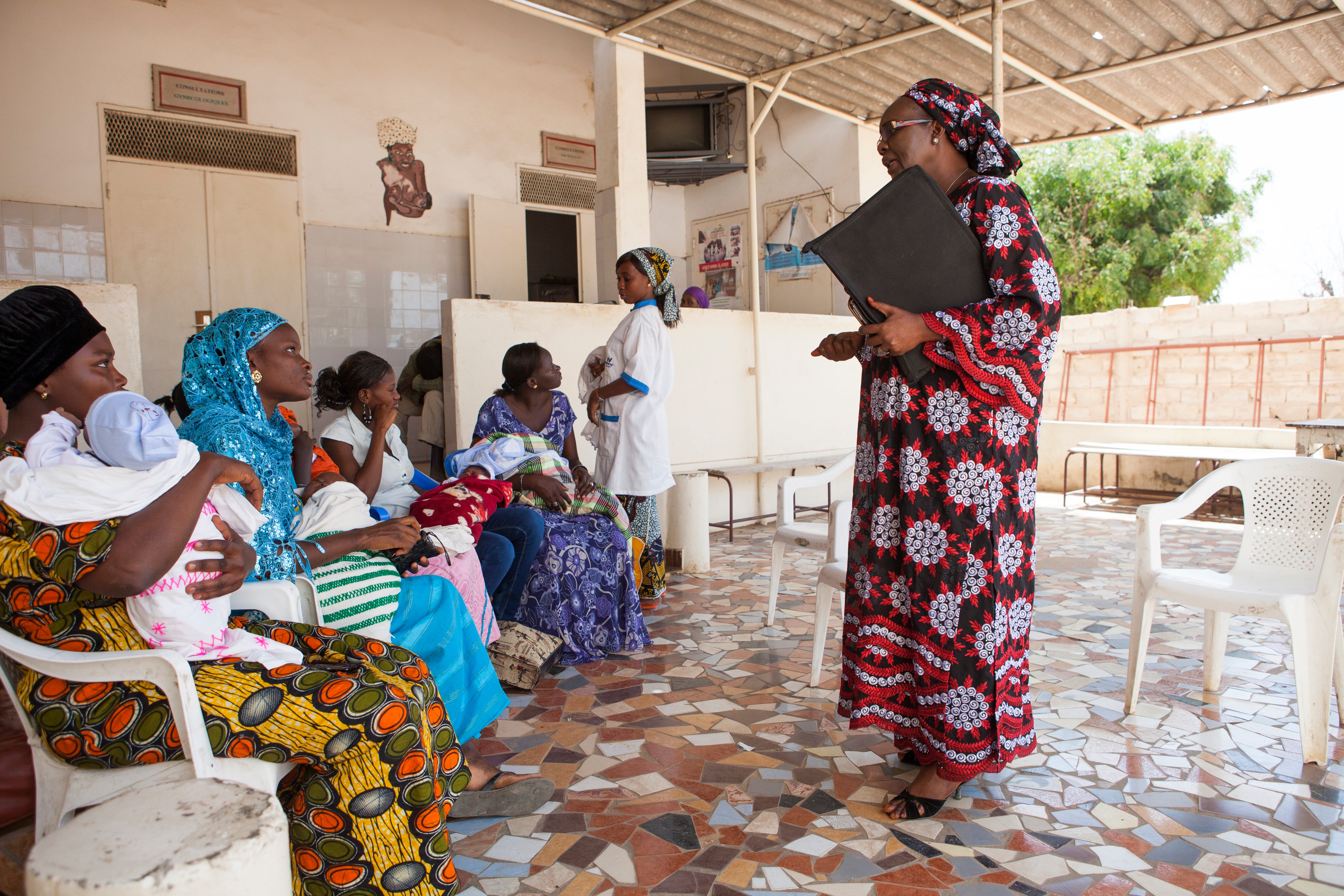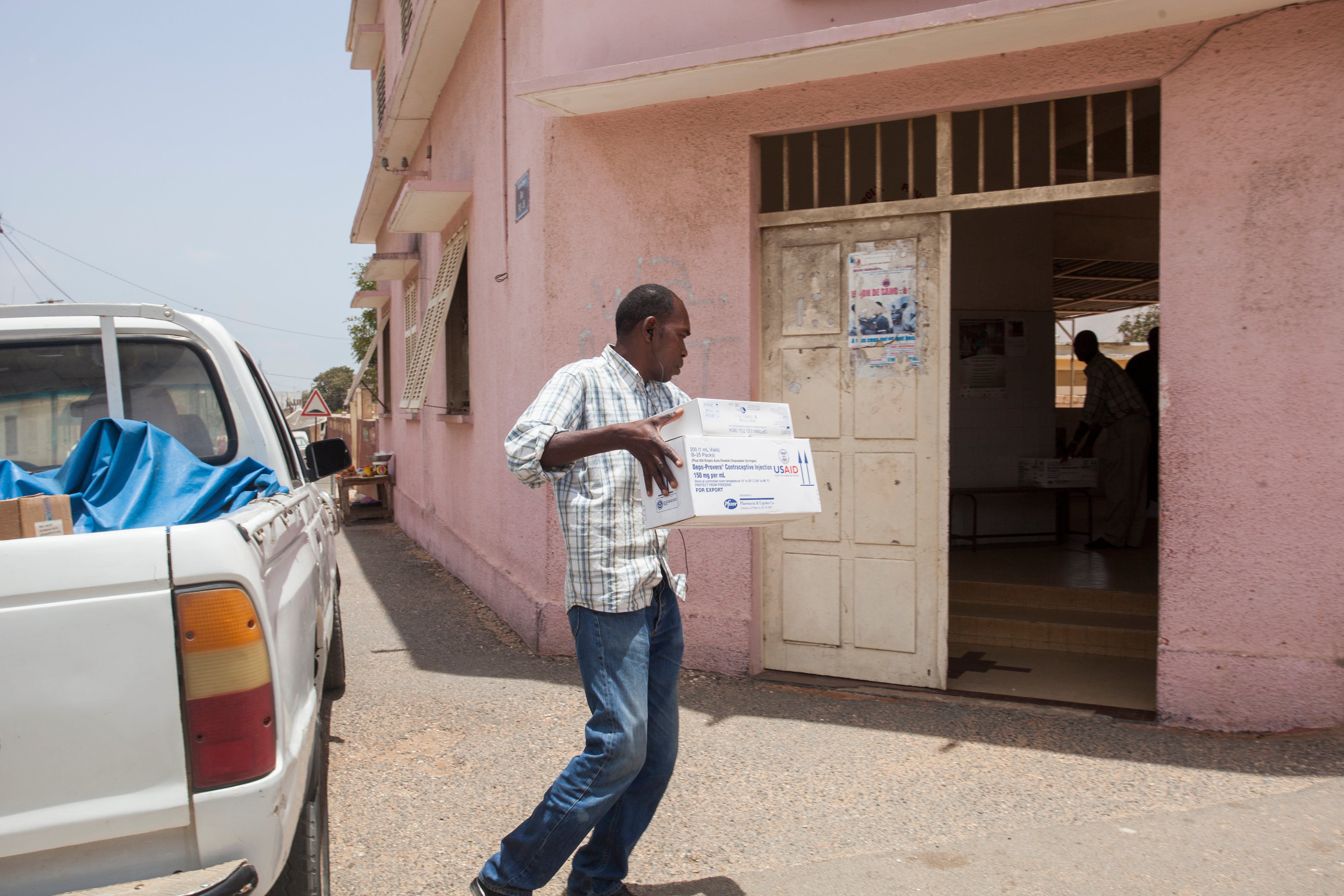Neonatal and maternal mortality reduction in Senegal
By reducing financial barriers to delivery care, improving coordination of community health workers, and prioritizing family planning, Senegal has emerged as an Exemplar in the West African region making rapid progress in improving neonatal and maternal health.
CONTENTS
Introduction to Senegal
Located on the coast of West Africa, Senegal became independent in 1960 following a transfer of power agreement with France. In the decades since, Senegal has established itself as one of the most stable democracies in Africa and as a key arbiter of peace in the region.
Senegal is divided into 14 administrative regions, which are further disaggregated into 45 departments and 113 arrondissements. The capital city of Dakar is located in the Dakar region, which is the most populous of all regions despite being the smallest geographically. Generally, population density is highest along the western coast than in the eastern portions of the country, which are predominantly rural . Senegal has become increasingly urban in recent decades, with 48% of the population living in urban areas in 2020 as compared to 40% in 2000.
Figure 1: Population Density by Administrative Region of Senegal in 2000 and 2020

WorldPop (www.worldpop.org - School of Geography and Environmental Science, University of Southampton; Department of Geography and Geosciences, University of Louisville; Departement de Geographie, Universite de Namur) and Center for International Earth Science Information Network (CIESIN), Columbia University (2018). Global High Resolution Population Denominators Project - Funded by The Bill and Melinda Gates Foundation (OPP1134076). https://dx.doi.org/10.5258/SOTON/WP00675
The Senegalese economy began a generally steady upward trend during the mid-1990s. From 1995 to 2020, GDP per capita rose from US$984 to US$1,391 (2015 US dollars). This reflects a 41% increase in GDP per capita over that 25-year span, which stands in stark contrast to the 7% decrease observed in the previous 25 years from 1970 to 1995. This has translated to a better economic outlook for many people in the country, as in 2018, 9.3% of the population lived in poverty (i.e., less than 2017 US$2.15 per person per day) compared with 70.1% in 1991.
Although this economic progress is impressive, our country selection analysis suggests that it does not completely explain Senegal’s success in reducing neonatal and maternal mortality. Additional details about Senegal are included in the Context section, and the majority of this narrative will highlight key indicators, interventions, policies, and programs that contributed to rapid neonatal and maternal mortality reduction in Senegal.
Key Insights
Senegal has made health care more accessible to its citizens by expanding its network of lower-level health facilities and removing financial barriers, while also empowering its workforce of nurses, midwives, and community health workers.
Removed user fees from delivery services
Senegal removed financial barriers to delivery care in 2005, helping to increase utilization of healthcare services and ultimately lower maternal and neonatal mortality.

In 2005, Senegal passed the National Free Delivery and Caesarean policy to mitigate financial barriers to facility-based delivery care. This policy removed user fees for normal deliveries at health posts and health centers, as well as C-sections at higher-level facilities. Evidence shows that this policy increased utilization of healthcare services, referrals to higher level care, and rates of C-section delivery. Our Lives Saved analysis also suggests that the number of maternal and neonatal lives saved by C-section and other facility-based interventions (e.g. uterotonics, MgSO4, and antibiotics) increased dramatically after this policy was initiated.
Strengthening networks of community health workers
Senegal has invested in and formalized a network of ~25,000 community health workers to promote healthcare services and extend the reach of the health care system.
Senegal launched the National Community Health Policy in 2014, which formally established five categories of community health workers (CHWs) with distinct roles: community-based health care workers, home health care providers, community liaisons, matrons, and the Bajenu Gox. Each play a distinct role in linking communities to the country’s growing health system. For example, the Bajenu Gox are respected female leaders who promote MNCH programming, advocate for women’s health, mobilize communities, and refer women to care. Overall, these and other policies have coordinated community interventions, promoted citizens’ participation in the health care system, and made services easier to access across the country – especially in rural and remote areas.

Launched a family planning action plan to improve contraceptive demand, access, and uptake
Senegal’s launch of a family planning action plan combined supply-side innovations and demand generation to improve access to contraceptives.

Senegal launched a National Family Planning Action Plan in 2012 that uses a framework anchored on the “3 D’s” of democratization (expand support for FP), demedicalization (remove policy barriers preventing some providers from providing FP services), and decentralization (strengthen community level FP programs). This plan included a restructured ‘informed push’ approach to supply chain strategy and logistics, which dramatically reduced stockouts of contraceptive products. The initiative also launched increased public awareness campaigns to generate demand for family planning services and reduce stigma. In 2019, met need for family planning using modern methods among married women reached 52.6%, compared to 13.2% in 1992 -- nearly a 300% improvement. In one of our quantitative analyses, increased rates of modern contraceptive use were also found to be a key contributor to neonatal mortality reduction, accounting for 19% of the decline in neonatal mortality rate between 2005 to 2018.
Contextualizing Senegal’s Progress in an Integrated Mortality Transition Framework
Senegal demonstrated exemplary progress in improving maternal and neonatal health outcomes from 2000 to 2017, progressing from early phase II towards phase III.
Senegal progressed on the integrated mortality transition framework from 2000 to 2017, reflecting its status as an Exemplar. The integrated mortality transition framework represents a powerful tool for contextualizing Senegal’s progress and identifying areas to address to continue this trajectory.

Exemplars in Global Health program
The Exemplars in Global Health program aims to learn from countries that have made rapid progress in improving health outcomes and disseminate this evidence to inform health policy and funding decisions. Our aim is to research success stories from low- and middle-income countries and share findings that can be useful for leaders looking to act in comparable contexts.
In selecting Exemplar countries, we review evidence to identify countries that outperformed their peers in vital areas of public health, controlling for factors such as economic growth. In this way, we aim to provide more actionable, policy-relevant insight for stakeholders about how health progress can be made despite resource limitations.
Guided by research partners and technical advisors, we conduct quantitative and qualitative analyses to validate our initial assessments and assess factors that contribute to a country’s exemplary performance.
Research in and across Exemplar countries could help ministries, nongovernmental organizations, and multinational bodies better deploy finite resources to address key public health issues in low- and middle-income countries.
By studying proven strategies to prevent disease, malnutrition, and other conditions that burden populations of low- and middle-income countries, we aim to create a repository of data-driven narratives that can serve as resources for leaders looking to improving health within their own countries. The following narrative focuses on factors that contributed to rapid reductions in neonatal and maternal mortality in the Exemplar country of Senegal.
Neonatal and maternal mortality reduction in Senegal

Ask an Expert
Our team and partners are available to answer questions that clarify our research, insights, methodology, and conclusions.
